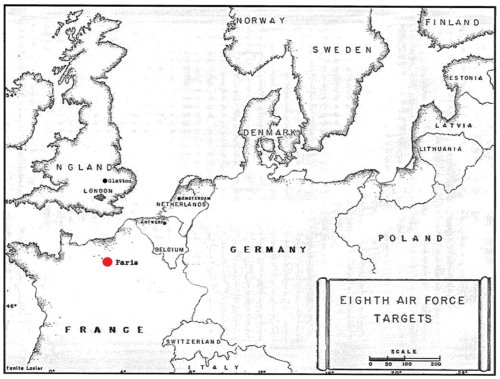TARGET: MARSHALLING YARDS
PARIS, FRANCE
4 JUNE, 1944

The 457th put an entire Combat Wing into the air, attacking with three 12-ship boxes. The targets were two railroad choke points south of Paris. The targets were purely tactical, part of the plan to disrupt and destroy the German transportation system prior to the invasion. Take off did not occur until late afternoon. Col. Luper led the Wing as Air Commander, with Captain Jerry Godfrey as pilot. Captain Raymond A. Syptak and Major Jacob M. Dickinson lead the other two boxes with Lt. Malcolm E. Johnson and Lt. Edward B. Dozier as pilots.
The route to the target took the Group south over the English Channel, crossing the French Coast just north of the British-Canadian beach landing two days hence.
All three boxes bombed with excellent results. There was no enemy aircraft opposition and only meager flak, that being in the area of Caen.
On the return trip low clouds over the English Channel forced the formation to descend low for the remainder of the mission. The Thames Estuary was crossed andhundreds of invasion craft were observed by the crews. At Glatton, the weather was extremely poor and the aircraft were diverted to other bases. This prevented the Group from flying a mission on June.
For his leadership and extraordinary achievements while serving as Air Commander of a combat bombardment wing, Col. Luper was later awarded the Distinguished Flying Cross.
“For extraordinary achievements while serving as Air Commander of a combat bombardment wing on 4 June 1944, despite the presence of extremely thick overcast, Colonel Luper assembled his Wing. Although a new type of formation was being used for the first time in this theatre, he skillfully assembled his units in their proper positions in the formation. Throughout the entire flight to the target, Colonel Luper maintained the integrity of the formation, thus minimizing vulnerability to attacks from the enemy. A perfect bomb run was made by each of the units in his formation and superior bombing results were achieved. The outstanding success achieved on this mission is directly attributable to the high degree of leadership exhibited by Colonel Luper on this occasion.”
